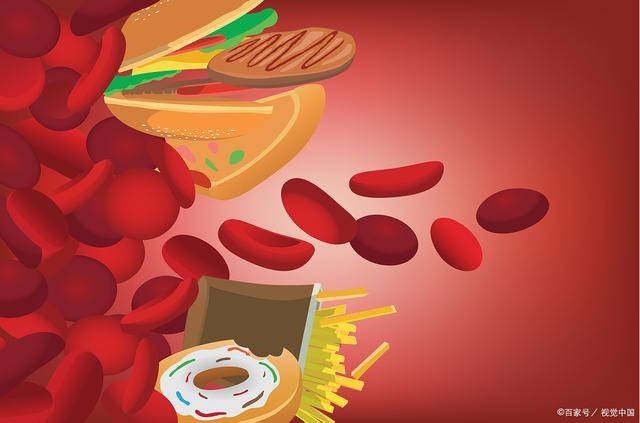Elevated blood lipids, medically known as hyperlipidemia, refers to levels of lipids (mainly cholesterol and triglycerides) in the blood that exceed normal ranges. Hyperlipidemia is an important risk factor for cardiovascular diseases and can increase the risk of heart disease, stroke, and atherosclerosis.
The symptoms of hyperlipidemia are usually not obvious, and many people may already have hyperlipidemia without any symptoms. However, prolonged hyperlipidemia may lead to the following symptoms and complications:
1. **Xanthomas**: Yellow or orange patches on the skin, typically around the eyelids or other parts of the body.
2. **Corneal arcus**: A gray-white ring that forms at the edge of the cornea, known as arcus senilis, commonly seen in familial hypercholesterolemia.
3. **Atherosclerosis**: Prolonged hyperlipidemia may lead to hardening of the arterial walls, increasing the risk of heart disease and stroke.
4. **Heart attack or stroke**: Hyperlipidemia is a major risk factor for heart attacks and strokes.
Treatment for hyperlipidemia typically includes the following aspects:
– **Lifestyle changes**: These include a healthy diet, regular exercise, quitting smoking, and limiting alcohol intake.
– **Medication**: Common medications include statins, fibrates, niacin, and bile acid sequestrants.
– **Regular monitoring**: Regular monitoring of blood lipid levels to track treatment effectiveness and adjust treatment plans.
If you suspect you have hyperlipidemia, consult a doctor for blood tests and follow the appropriate treatment and management based on their advice.
Can people with elevated blood lipids eat noodles?
Elevated blood lipids usually refer to high levels of cholesterol and triglycerides in the blood, which may increase the risk of heart disease and stroke. Therefore, dietary management is particularly important for individuals with elevated blood lipids. Noodles, as a common staple food, require consideration from various angles when it comes to whether they are suitable for individuals with elevated blood lipids.
Firstly, noodles are mainly composed of carbohydrates, providing the body with essential energy. However, excessive intake of carbohydrates, especially refined carbohydrates like white noodles, may lead to rapid spikes in blood sugar, prompting the body to produce more insulin, indirectly causing triglyceride levels to rise.
Secondly, the type and preparation of noodles will also affect their impact on blood lipids. For example, whole grain noodles contain more fiber compared to white noodles, which helps slow down the rise in blood sugar and has a lesser impact on blood lipids. Additionally, if noodles are cooked with a lot of fats, such as in stir-fried noodles or oil-splashed noodles, the intake of fats increases, which is unfavorable for individuals with elevated blood lipids.
Furthermore, the accompaniments of noodles are crucial. If noodles are paired with high-fat meats and cheese or condiments high in sugar content, this dietary combination is clearly unsuitable for individuals with elevated blood lipids. Conversely, pairing noodles with vegetables and moderate amounts of lean meat makes the noodle dish healthier.
In conclusion, individuals with elevated blood lipids can eat noodles but should choose the appropriate type of noodles, pay attention to the cooking method, and correctly combine them with other foods. It is recommended to opt for whole wheat or coarse grain noodles, minimize the use of fats during cooking, and accompany them with a variety of vegetables and adequate high-quality proteins. This approach can meet nutritional needs, help control blood lipid levels, and regular monitoring of blood lipid levels and adjusting the diet according to medical advice is crucial for maintaining health.
Reminder: To stabilize blood lipids, it is advisable to avoid these 4 types of vegetarian foods.
1. Fried vegetarian foods
Fried foods contain high amounts of fats and calories. Even vegetarian options, when deep-fried at high temperatures, can significantly increase their fat content. Long-term consumption of fried vegetarian foods can not only increase the accumulation of fats in the body but also lead to elevated blood lipids.
2. High-sugar vegetarian foods
Some vegetarian snacks like candied haws and doughnuts contain high sugar content. Excessive sugar intake can be converted into fat storage, affecting blood lipid levels. Therefore, even for vegetarians, controlling the intake of high-sugar foods is essential.
3. Processed vegetarian foods
Processed vegetarian foods available in the market, such as vegetarian meat or chicken substitutes, although free of animal fats, often contain large amounts of flavorings and additives for enhanced taste, which may have adverse effects on blood lipids.
4. High-starch vegetarian foods
High-starch foods like white rice and potatoes, while vegetarian, quickly convert into sugars in the body and may further convert into fats, leading to elevated blood lipids. Therefore, individuals with abnormal blood lipids should consume these foods in moderation, along with sufficient vegetables and proteins.
Summary:
Although a vegetarian diet is beneficial for health, not all vegetarian foods are suitable for individuals with abnormal blood lipids. To stabilize blood lipids, it is recommended to avoid consuming fried, high-sugar, processed, and high-starch vegetarian foods. Opt for whole grains, fresh vegetables, and soy products as low-fat, high-fiber vegetarian options. Balanced diet and moderate exercise should be maintained to support healthy blood lipid levels.


